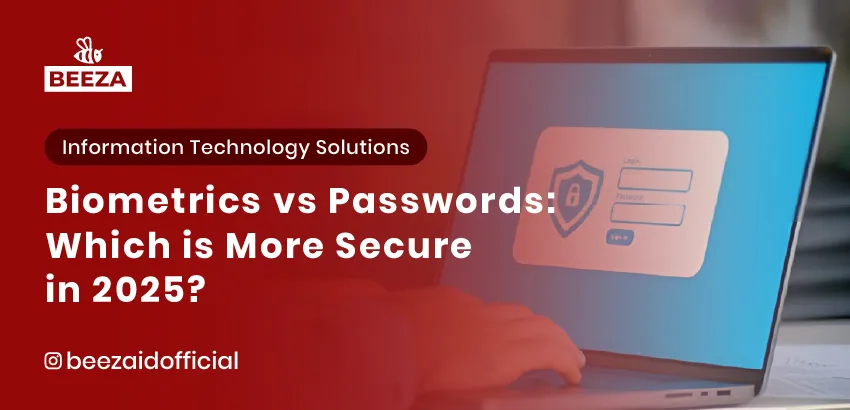
Introduction: Biometrics vs Passwords
In today’s digital era, security has become a top priority. Whether unlocking a smartphone or accessing banking services, authentication is essential to protect personal data. The two most common authentication methods are passwords and biometrics.
While passwords have been used for decades, they are increasingly seen as vulnerable due to issues like weak credentials, data breaches, and user negligence. Biometrics—such as fingerprint scans, facial recognition, and iris detection—are rising in popularity as a more secure and convenient alternative.
But is biometrics truly safer than passwords in 2025? This article compares both authentication methods in terms of security, usability, privacy risks, and practical implementation.
What Are Passwords and How Do They Work?
Passwords are character combinations used to access accounts or devices. Their security depends on length, complexity, and secrecy.
✅ Advantages:
- Easy to implement and understand
- Doesn’t require any hardware
❌ Disadvantages:
- Susceptible to phishing and brute-force attacks
- Often reused or poorly managed by users
- Hard to remember complex combinations
- Easily guessed if based on personal data
What Are Biometrics and How Do They Work?
Biometrics authenticate users by verifying unique physical or behavioral traits such as:
- Fingerprints
- Facial recognition
- Iris or retina scans
- Voice recognition
- Keystroke patterns
These technologies compare input data to previously stored templates to verify identity.
✅ Advantages:
- Unique and difficult to forge
- Convenient and fast authentication
- No need to memorize or reset
❌ Disadvantages:
- Biometric data can’t be changed if leaked
- Requires specialized hardware (scanners, cameras)
- Risk of false positives/negatives
- Raises concerns about data privacy and misuse
Biometrics vs Passwords: A Comparison
| Aspect | Passwords | Biometrics |
| Security | Vulnerable to hacking | Harder to fake, but not invincible |
| Convenience | Must be remembered and typed | Quick and user-friendly |
| Data Breach Risk | Can be changed if leaked | Permanent — cannot be replaced |
| Implementation Cost | Cheap and universal | Costlier — requires hardware integration |
| Privacy Concerns | No physical data stored | High risk if stored improperly |
Is Biometrics Always More Secure?
While biometrics are generally more secure due to their uniqueness, they are not flawless. For example, facial recognition systems can be tricked with high-resolution photos or 3D masks—especially without liveness detection.
Additionally, if biometric data is compromised, it can’t be reset like a password. This makes secure storage and on-device processing essential. Best practices include:
- Encrypting biometric templates
- Storing them locally rather than in cloud servers
- Applying anti-spoofing technologies
The Best Solution: Use Both (Multi-Factor Authentication)
The most secure approach in 2025 is combining something you know (password) with something you are (biometric), commonly known as Multi-Factor Authentication (MFA).
🔐 Examples of MFA Implementation:
- Login with a password + fingerprint verification
- Banking app access via PIN + face scan
- Workstation login using a card + iris scanner
This layered security significantly reduces the risk if one method is compromised.
Conclusion
Passwords and biometrics each come with pros and cons. While passwords are cheap and flexible, they are highly vulnerable. Biometrics are harder to breach and more convenient, but irreversible if leaked and require careful implementation.
🔹 Biometrics provide enhanced security and speed but must be managed with strong privacy measures.
🔹 Passwords remain useful when combined with other authentication methods.
🔹 The most secure approach is to combine both in a multi-factor strategy.Want to integrate secure biometric authentication into your business systems?
Contact Beeza today to discover how our identity and security solutions can protect your services and enhance user experience.